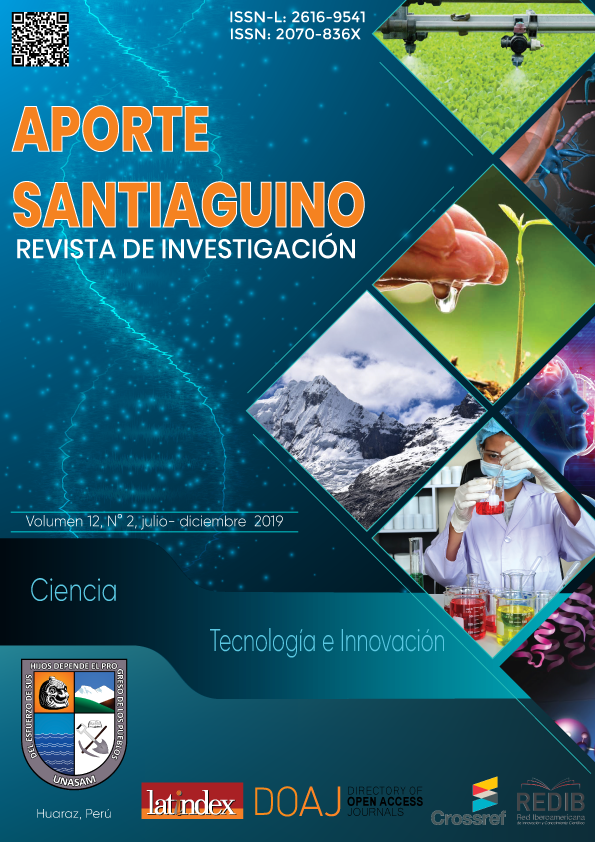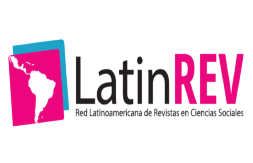Estimated heritability of body weight and fibers length in alpacas Huacaya
DOI:
https://doi.org/10.32911/as.2019.v12.n2.639Keywords:
alpaca, body weight, fibers length, heritabilityAbstract
In this study was analyzed the body weight, fleece weight and fiber length of 1363 alpacas of the Huacaya
breed, in the Sociedad Agricola de Interes Social (SAIS) Pachacutec Ltda. Nº 7, placed in Yauli county,
Department of Junin, at 4200 meters over sea. The objectives were: to find averages, correlations, regressions
and heritability of body weight, fleece weight and fibers length in Huacaya alpacas. The productive
characteristics of the 1363 alpacaswere: bodyweight, 58, 40±6, 37 kg; fleeceweight, 2, 27±0, 66 kg and
fibers length, 11, 11±1, 99 cm. The weight of the progeny at birth and at weaning were: 7, 31±1, 03 and
31, 41 ± 4, 96, respectively. The correlation coecients for body weight-fleece weight and fleece weight-
fibers length in 1363 alpacas, have values of 0, 074 and 0, 311, respectively. The regression coecients
were 0, 009 and 1, 20 for body weight-fleece weigth and fleece weight-fibers length, respectively. To estimate
heritability, records of 764 mothers alpacas (progenitor) and their ospring (progeny) was used.
The calculation of the variance componentswas performed using the parent-ospring regression, the values
of heritability of liveweight and fibers length of Huacaya alpacaswere 0, 27±0, 08 and 0, 21±0, 07,
respectively.
Downloads
References
Bustinza, Víctor. 2001.Mejoramiento genético. En Producción de RumiantesMenores: Alpacas. RESUMEN. Lima, Perú. Pág. 113 - 128.
Calcina, Jaime. 2007. Evaluación del efecto de la edad de la madre, el sexo de la cría sobre características de importancia económica y sus correlaciones en alpacas Huacaya del C.I.P. La Raya-Puno. Tesis de Maestría en Producción Animal. Escuela de Post Grado Universidad Nacional Agraria La Molina. Lima, Perú.
Candio, Julissa. 2011. Caracterización de la fibra del plantel de alpacas de la SAIS Pachacutec-Junin.Tesis Ing. Zootecnista Universidad Nacional Agraria LaMolina. Lima, Perú. Pag. 35-52.
Falconer, Douglas y Mackay, Trudy. 2004. Introduction to Quantitative Genetics. Longman Group Ltd. Cuarta edición. England. 4694 pág.
Kress, David. 1981. Conceptos básicos en el mejoramiento genético del ganado. En: Curso Corto de Mejoramiento de Ovinos y Alpacas. Lima, Perú.
Lasley, John. 1991. Genética del mejoramiento del ganado. Ed. Limusa.México. 378 pág.
Little Thomas y Hills, Frederich. 1991. Statistical methods for research in agriculture. University of California Davis. California, U.S.A.
Palacios, Mario. 2009. Evaluación técnica-productiva del núcleo de alpacas Huacaya del fundoMallkini-Azángaro Puno. Tesis Ingeniero Zootecnista. Universidad Nacional Agraria La Molina. Lima, Perú.
Quispe, Edgar. 2010. Estimación del progreso genético de seis esquemas de selección en alpacas (Vicugna pacos L.) Huacaya con tres modelos de evaluación en la región altoandina de Huancavelica. Tesis Ph.D. Universidad Nacional Agraria LaMolina. Lima, Perú.
Roque, Juan. 1982. Parámetros tecnológicos de lanas de nueve empresas campesinas de Puno. Tesis Ingeniero Zootecnista. Universidad Nacional Agraria LaMolina. Lima, Perú.
Steel, Robert y Torrie, James. 1996. Biostatistics: Principles and procedures.McGraw-Hill College. 2da. Edición.México. 672 pág.
Vilela, Jorge. 2014.Mejoramiento genético en animales domésticos. EditoraMacro E.I.R.L. Lima, Perú.
Wuliji T., Davis G., Dodds K., Turner P. Andrews R. y Bruce G. 2000. «Production, performance, repeatability and heritability estimates for live weight, fleece weight and fiber characteristics of alpacas in New Zealand». Small Ruminant Research. 1; 37(3) : 189 - 201.




















